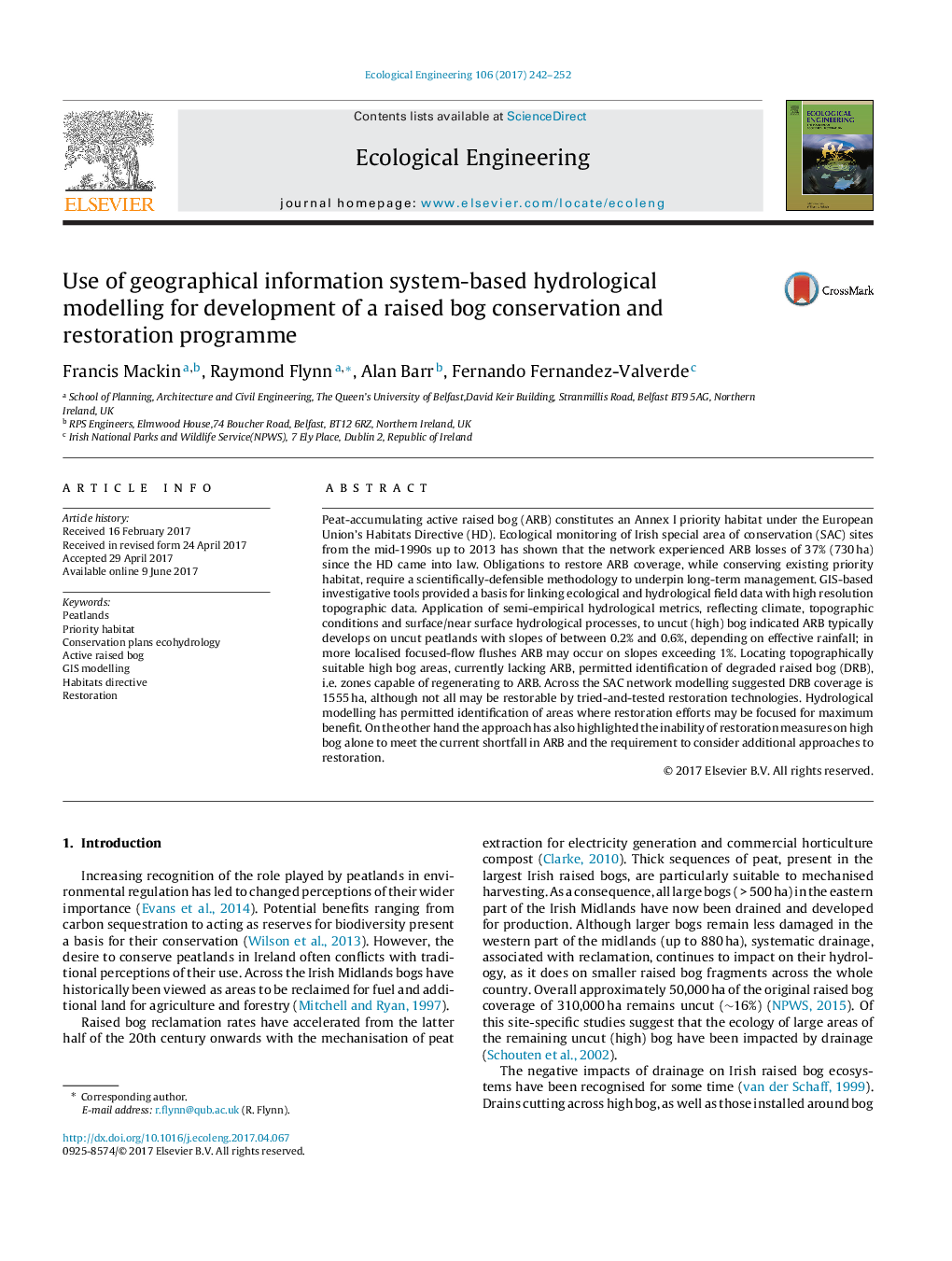| کد مقاله | کد نشریه | سال انتشار | مقاله انگلیسی | نسخه تمام متن |
|---|---|---|---|---|
| 5743840 | 1412322 | 2017 | 11 صفحه PDF | دانلود رایگان |
- Irish raised bog SACs have experienced 37% loss in priority habitats since the 1990s.
- Restoration obligations require scientifically-defensible modelling protocols.
- GIS-based modelling provides a basis for identifying restorable areas.
- Model outputs allow focusing of resources for long term restoration and management.
- Results show a need for additional restoration techniques and hydrological research.
Peat-accumulating active raised bog (ARB) constitutes an Annex I priority habitat under the European Union's Habitats Directive (HD). Ecological monitoring of Irish special area of conservation (SAC) sites from the mid-1990s up to 2013 has shown that the network experienced ARB losses of 37% (730Â ha) since the HD came into law. Obligations to restore ARB coverage, while conserving existing priority habitat, require a scientifically-defensible methodology to underpin long-term management. GIS-based investigative tools provided a basis for linking ecological and hydrological field data with high resolution topographic data. Application of semi-empirical hydrological metrics, reflecting climate, topographic conditions and surface/near surface hydrological processes, to uncut (high) bog indicated ARB typically develops on uncut peatlands with slopes of between 0.2% and 0.6%, depending on effective rainfall; in more localised focused-flow flushes ARB may occur on slopes exceeding 1%. Locating topographically suitable high bog areas, currently lacking ARB, permitted identification of degraded raised bog (DRB), i.e. zones capable of regenerating to ARB. Across the SAC network modelling suggested DRB coverage is 1555Â ha, although not all may be restorable by tried-and-tested restoration technologies. Hydrological modelling has permitted identification of areas where restoration efforts may be focused for maximum benefit. On the other hand the approach has also highlighted the inability of restoration measures on high bog alone to meet the current shortfall in ARB and the requirement to consider additional approaches to restoration.
290
Journal: Ecological Engineering - Volume 106, Part A, September 2017, Pages 242-252
